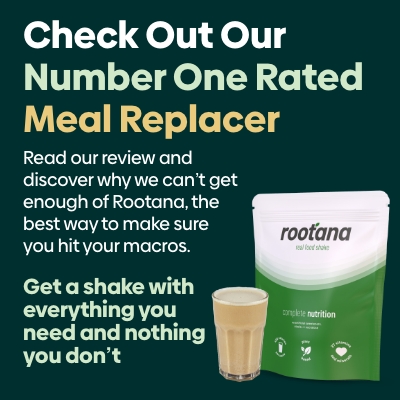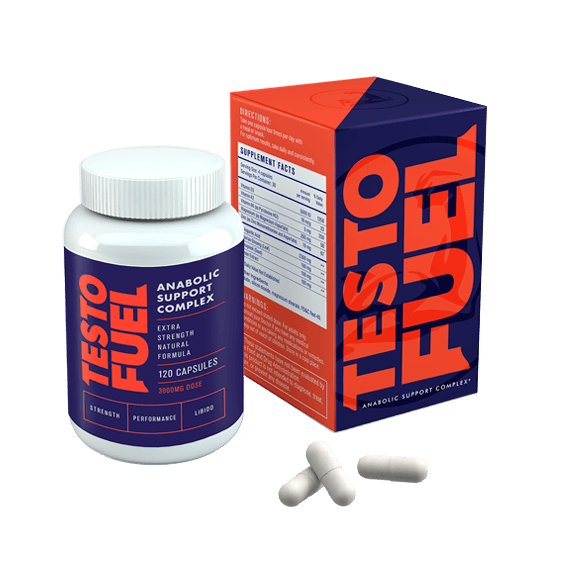Huel Vs Soylent
Meal replacements are some of the most popular supplements currently on the market. They give people access to affordable nutrition that can be used virtually anywhere, so are ideal to ensure you can get all the nutrients you need, no matter your budget or how hectic your life is.
With so many meal replacement shakes, as well as various other meal replacement products, out there, each with their own unique selling points, picking the right meal replacement for you can be a challenge. There are some that have made themselves stand out though.
Huel and Soylent are two of the most popular meal replacements currently sold, but do they deserve to be? That is what we plan to find out in our Huel vs Soylent review, as we compare Huel to Soylent, and both Huel and Soylent to other top meal replacements, such as Rootana.
—> Related Article —> Best Meal Replacement Shakes
Huel Meal Replacement Overview
The top selling Huel product is the Huel Essential Formula Meal Replacement Shake.
It is made using oat flour, tapioca starch, pea protein, brown rice protein, ground flaxseed, sunflower oil powder, xanthan gum, sucralose, natural flavourings, and a micronutrient blend of corn starch, maltodextrin, and various vitamins and minerals.
It uses only plant based ingredients, is high in fibre, protein, omega 3 and 6, and slow release carbs, low sugar and GI, contains no animal products, GMOs, or lactose, and only has natural flavourings. It is also very affordable and billed as a fast food alternative that isn’t junk food.
Soylent Meal Replacement Overview
Soylent Meal Replacement shakes consist of soy protein isolate, canola oil, isomaltulose, maltodextrin, soluble corn fiber, modified food starch, soy lecithin, cellulose, vitamins and minerals, salt, mono & diglyceride, xanthan gum, sucralose, and various flavourings.
The formula is entirely vegan and contains no tree nuts, and is designed to help provide sustained satiety and energy, strength, heart and muscle health, immune system support, and effective hydration and metabolism.
Meal Replacement Shake Ingredients
Most of the Huel powder ingredients look good at first, as it contains plenty of whole foods and essential nutrients, including carbs, fats, fibre, protein, and a range of 26 vitamins and minerals. However, there are a few problems with its formula.
The ingredients all being in a proprietary blend is an issue as it means there is no way to know how much of each you are actually consuming. This gets worse as some of the ingredients are known to only be used as they are slightly cheaper, rather than them being the best option.
The Soylent powder ingredient list is much the same story, as it again mixes useful ingredients with less effective ones and lumps them all together in a blend with no quantities listed. There are slightly more issues with it than the Huel list though.
Not only is soy protein isolate considered a less effective plant based protein than things like pea protein and brown rice protein, but this Soylent powder also contains a number of added sugars (1).
This brings the total sugar content of each Soylent drink to 16 grams, which can easily spike your blood sugar and cause health problems, such as diabetes (2).
When it comes to Huel vs Soylent, the quality of ingredients used definitely favours Huel. That said, both Soylent and Huel are significantly inferior to the top meal replacement drinks on the market, such as Rootana.
Meal Replacement Macronutrient Ratio
The macronutrient breakdown of the Soylent meal replacement drink is 400 calories, 19 grams of fat, 20 grams of protein, 6 grams of fibre, and 42 grams of carbs. This is fairly decent and allows the Soylent powder to be used as a human fuel.
The Huel powder again provides 400 calories and 20 grams of protein per serving, but this time delivers 9 grams of fat, 6.6 grams of fibre, and 57 grams of carbohydrates, which is very high (3).
The clear difference between Huel and Soylent here is that Huel is much higher carb and Soylent is high in fat.
For comparison, a serving of Rootana has 421 calories, 16 grams of fat, 44 grams of carbs, 7.1 grams of fibre, and 21 grams of protein. This is pretty much perfect to both fill you up and provide an optimal nutrient balance (4).
So, when comparing Huel vs Soylent in terms of their macronutrient ratio, neither is bad, but both are far from perfect.
Range Of Meal Replacement Shake Flavours
The standard Huel powder comes in a choice of two natural flavors, chocolate and vanilla. The Huel Powder 3.0 version then adds more flavors, with banana, berry, cinnamon swirl, coffee, caramel, mint chocolate, original, and “unflavoured & unsweetened”.
Soylent’s flavors again boil down to 2 choices with the basic powder, those being original and cacao. However, you can again add more flavors, this time by buying flavour powders to add to the Soylent powder. These include salted caramel, matcha, peanut butter, and strawberry.
This makes examining Huel vs Soylent in terms of flavour choices pretty much a tie.
Meal Replacement Shake Price
Price is one of the biggest differences between the two meal replacements, as each Soylent drink works out at roughly twice the price of a serving of the Huel powder. The only catch is that the Huel powder has to be purchased in bulk.
That means if you are still debating buying Huel vs Soylent and can make a choice, it could come down to what is more important for you to save, money or space.
Customer Reviews Of The Meal Replacement Shakes
Customer reviews of the Soylent powder look pretty decent, and it has an average rating of 4.6 out of 5 stars. A regular theme when looking at positive reviews of Soylent was that the drinks did indeed fill people up in a similar fashion to complete meals, albeit without all the nutrients.
There were plenty of negative reviews of the Soylent drink too though. These mentioned things like seeing no health benefits, finding the taste disgusting, and even experiencing side effects, which included balding, nausea, and stomach pains.
Unfortunately, Huel powder is only sold directly on the company’s official website and there is no place to leave a review of each product, so we can’t do a direct comparison. However, Huel users are able to leave feedback on the brand and its range of products on Trustpilot.
What we get is a very similar result to with Soylent. It has a 4.4 out of 5 stars rating and many users praised the range of products available, the ease and convenience of being able to fill themselves up without cooking meals, and many even enjoyed its natural flavors.
Unfortunately, there were again a number of complaints on things like it having a strange taste, unpleasant texture, and ability to cause side effects, such as diarrhoea.
What Other Meal Replacement Products Does Each Offer?
Both Huel and Soylent produce a range of supplements beyond their flagship meal replacement shakes.
In addition to the original Soylent powder, the company also make their meal replacement shake in ready to drink bottles, and make healthy snack bars, flavour powders, and a ready to drink energy and protein shake combo.
This also adds a few extra flavours, like cafe mocha, to the range.
However, product range is definitely an area where Huel really shines.
Beyond the Essential Formula Huel powder, Huel offers another meal replacement powder, the Huel ready to drink meals, a high protein meal replacement, vegan protein shakes, two Huel bar choices, and even a choice of “Hot & Savoury” nutritionally complete ready meals.
Huel Meal Replacement Pros & Cons
Pros
- Reasonably priced
- A great range of complimentary products are available
- GMO, lactose, and animal product free
- Low sugar and GI
Cons
- Proprietary blends hide the ingredient dosages
- Has to be bought in bulk and only from the official website
- Very high in carbs
- Caused some people to experience diarrhoea
Soylent Meal Replacement Pros & Cons
Pros
- Completely vegan
- Can have its range of flavours widened with flavour powders
- Customers praise its ability to fill them up
Cons
- Quite high in sugar
- Customers reported a strange taste and texture and some side effects
- Some lower quality ingredients limit its potential impact
Huel Vs Soylent Verdict: How Do They Compare To Each Other & Other Meal Replacements?
When comparing these two meal replacements, it seems Huel offers slightly more for the majority of people, as it is cheaper, has less sugar, and uses more effective ingredients. That said, there isn’t a huge difference between the two.
There is, however, a huge difference between these two products and the very best meal replacements on the market.
A product like Rootana is of a much higher quality and more nutritionally complete, making it a far better alternative to actual food, while being in the same price range. That is why, unless you are dead set on using either Huel or Soylent, we suggest you give Rootana a try instead.
Meal Replacements

